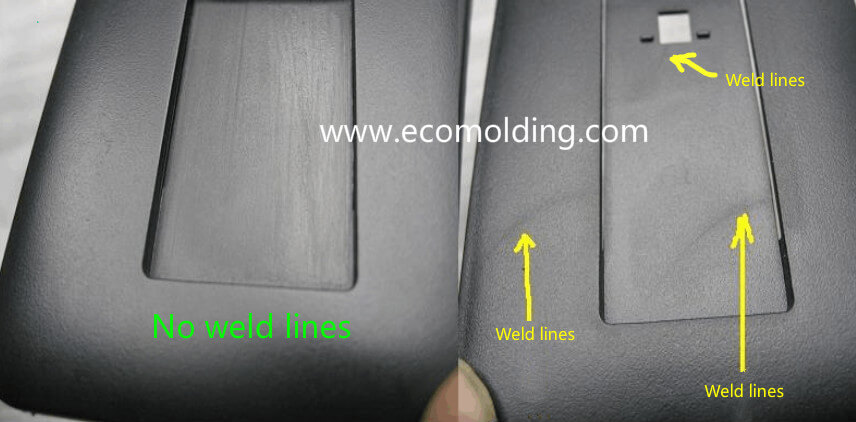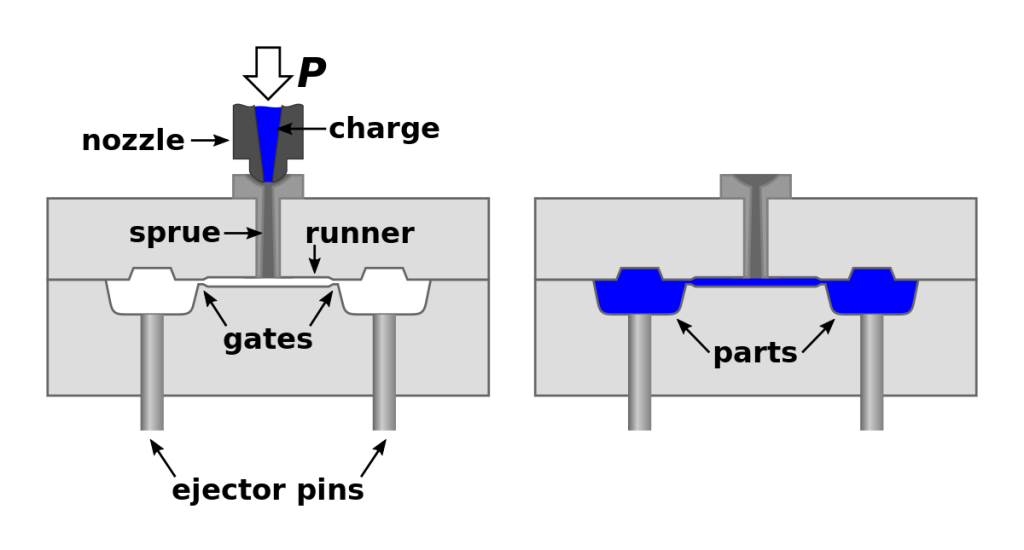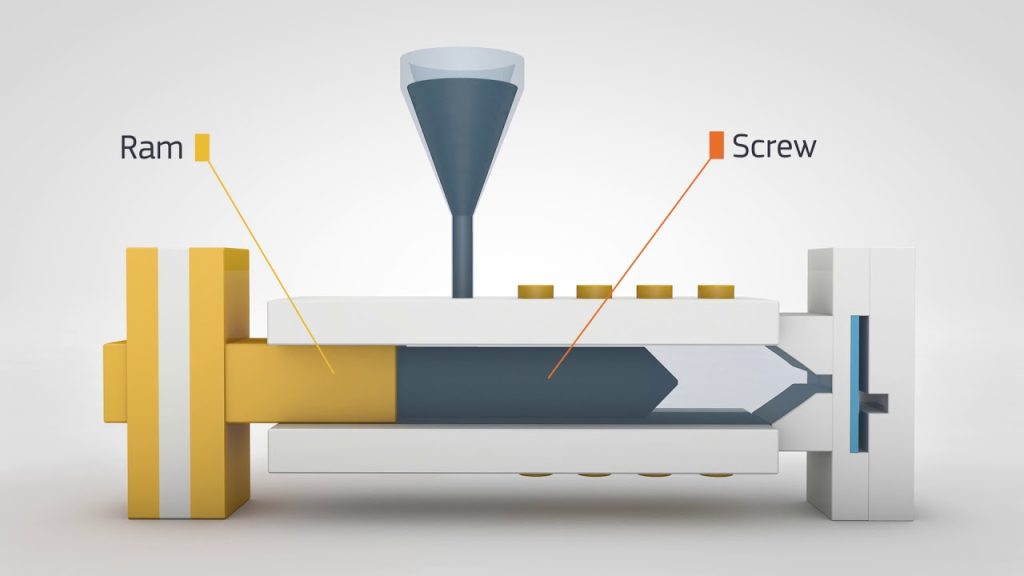Weld lines are an important factor to consider when it comes to injection molding. These lines can have a significant impact on the final product’s appearance and strength. In this article, we will delve into what weld lines are, how they form, and why they are important to consider in the injection molding process.
Weld lines are essentially where two or more molten plastic flows meet and then solidify. These lines can appear as a visible seam on the surface of the final product, and they can also weaken the product’s overall strength. Understanding how these lines form and how to mitigate their impact is crucial to creating high-quality injection molded products. So, let’s dive in and explore the world of weld lines in injection molding.
Understanding Weld Lines in Injection Molding
Weld lines are a common occurrence in injection molding that affects the overall quality and strength of a finished product. These lines are formed when two or more flowing molten plastic streams meet and fuse together, creating a visible line on the surface of the molded part. In this article, we will explore the causes of weld lines and how to minimize their impact on the final product.
Causes of Weld Lines in Injection Molding
Weld lines are caused by a variety of factors, including the flow rate and temperature of the molten plastic, the design of the mold, and the location of the injection points. The most common cause is the meeting of two or more molten plastic streams, which can occur when the plastic is forced to flow around an obstacle or when the flow fronts of two streams meet.
Another cause of weld lines is the use of multiple gates or injection points. When the molten plastic flows through the gates, it can create a visible weld line where the streams meet. The location of the gates and the design of the mold can also play a role in the formation of weld lines.
Minimizing the Impact of Weld Lines
While it is impossible to completely eliminate weld lines in injection molding, there are several ways to minimize their impact on the final product. One way is to adjust the temperature and flow rate of the molten plastic to reduce the chance of multiple streams meeting. This can be done by adjusting the injection pressure, speed, and temperature to optimize the flow of the plastic.
Another way to minimize the impact of weld lines is to use a mold design that reduces the chance of multiple streams meeting. This can be achieved by using a single gate or injection point, or by designing the mold to allow the plastic to flow more smoothly around obstacles.
Benefits of Minimizing Weld Lines
Minimizing weld lines in injection molding has several benefits, including improving the overall appearance and strength of the finished product. Weld lines can create weak spots in the plastic that can lead to cracking and failure over time. By minimizing weld lines, the product will have a more uniform appearance and be less prone to failure.
Weld Lines vs Sink Marks
Weld lines are often confused with sink marks, which are depressions in the surface of a molded part. While both are caused by the flow of molten plastic, weld lines are visible lines on the surface of the part, while sink marks are depressions that occur when the plastic cools and shrinks.
The best way to minimize the impact of sink marks is to adjust the mold design and the cooling rate of the plastic. By designing the mold to allow the plastic to cool more evenly, and by controlling the cooling rate of the plastic, sink marks can be minimized or eliminated.
Conclusion
In conclusion, weld lines are a common occurrence in injection molding that can affect the overall quality and strength of a finished product. By understanding the causes of weld lines and how to minimize their impact, manufacturers can produce high-quality products that meet the needs of their customers. With careful attention to mold design, plastic flow rates and temperatures, and injection points, weld lines can be minimized, leading to stronger, more uniform products.
Frequently Asked Questions
Learn about Weld Lines in Injection Molding
What are Weld Lines?
Weld lines, also known as knit lines, are lines that appear on the surface of an injection-molded part where two or more flow fronts meet and fuse together. During the injection molding process, molten plastic is injected into a mold cavity through a gate. The flow of plastic creates a “wavefront” that fills the cavity. When two wavefronts meet, they may create a visible line or a weak spot in the part.
Weld lines can be found in areas where the plastic flow fronts meet and then diverge. Common areas where weld lines occur include corners, T-joints, and other complex geometries. The appearance of the weld line depends on the type of plastic used, the processing conditions, and the design of the part itself.
What causes Weld Lines?
Weld lines occur when two or more flow fronts meet and fuse together. There are several factors that can cause weld lines, including the design of the part, the injection molding process, and the properties of the plastic material.
The design of the part can contribute to the formation of weld lines if it contains complex geometries, sharp corners, or T-joints. These features can cause the molten plastic to flow unevenly, resulting in a weak spot or a visible line. The injection molding process can also contribute to the formation of weld lines if the temperature, pressure, or flow rate is not properly controlled. Finally, the properties of the plastic material can affect the formation of weld lines, including its viscosity, melt flow rate, and melt strength.
How can Weld Lines be prevented?
Preventing weld lines requires a combination of good part design, proper injection molding process parameters, and careful selection of plastic materials.
Part design should avoid sharp corners, T-joints, and other complex geometries that can cause uneven plastic flow. Round or curved features can help to promote even flow and reduce the risk of weld lines. In addition, proper gate placement can help to control the flow of plastic and minimize the risk of weld lines.
Proper injection molding process parameters, including temperature, pressure, and flow rate, can also help to prevent weld lines. These parameters should be carefully controlled to ensure that the plastic flows evenly throughout the mold cavity. Finally, selecting a plastic material with good melt flow properties and melt strength can help to promote even flow and minimize the risk of weld lines.
How are Weld Lines detected?
Weld lines can be detected through visual inspection of the injection-molded part. They appear as lines on the surface of the part where two or more flow fronts meet and fuse together.
In addition to visual inspection, weld lines can also be detected through non-destructive testing methods, such as ultrasonic testing, X-ray inspection, or dye penetrant testing. These methods can help to detect internal defects or weak spots in the part that may not be visible to the naked eye.
What are the effects of Weld Lines on the part?
Weld lines can have several effects on the injection-molded part, including reduced strength, aesthetic issues, and potential failure points.
Weld lines can create a weak spot in the part where two or more flow fronts have fused together. This weak spot can reduce the overall strength and durability of the part. In addition, weld lines can create aesthetic issues, such as visible lines or discoloration, that may be unacceptable in certain applications. Finally, weld lines can create potential failure points in the part where stress concentrations may occur.
In conclusion, weld lines in injection molding refer to the point where two or more molten plastic streams meet and solidify. This process can result in weak spots and cosmetic defects in the final product. However, there are ways to minimize the appearance and impact of weld lines.
One approach is to adjust the injection molding process parameters, such as temperature, pressure, and speed, to ensure the molten plastic flows together smoothly. Another way is to use special techniques, such as gas-assisted molding, to create a hollow section inside the product and redirect the flow of plastic.
Overall, understanding weld lines is essential for injection molding professionals to produce high-quality products. With the right techniques and knowledge, weld lines can be minimized, resulting in better-looking and stronger products.
Request a quote today!
[contact-form-7 id="1578" title="Contact form"]
Please compress the file into a ZIP or RAR file before uploading. Alternatively, send through your RFQ by email.
enquires@unitymanufacture.com





